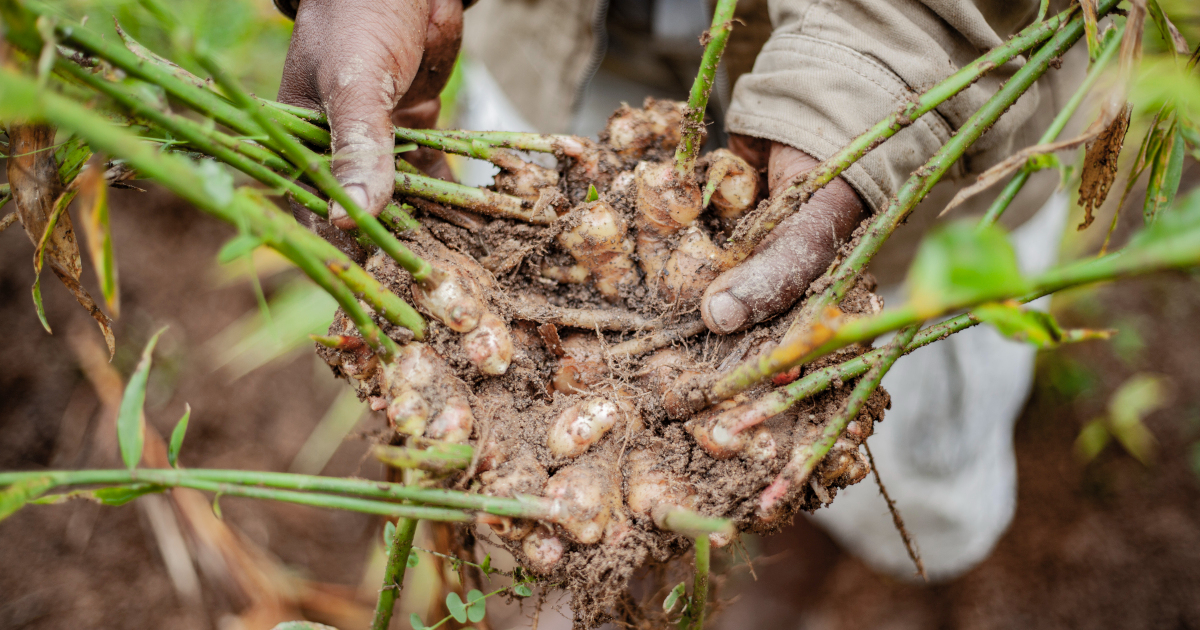Cette publication est également disponible en :
Français
On the occasion of the International Exhibition of Raw Materials for Perfumery (SIMPPAR) which will take place on May 31 and June 1 in Paris, we invite you to discover a series of articles originally published in the book From Plant to Essence. A World Tour of Fragrant Raw Materials. Today, let’s talk about ginger, grown and distilled in Madagascar by Symrise, an ingredient that Alexandra Carlin described in an article also published on the site.
In Madagascar, ginger is the king of spices. Closely associated with its queen, vanilla, it owes its presence as a crop on the island to Symrise, which set out to diversify the income streams of local growers outside the vanilla season. Ginger has long been considered an aphrodisiac. Grated or finely diced, it adds flavor to Eastern cuisine. In traditional Chinese medicine, it is believed to detoxify and reinvigorate the body. In perfumery, its essential oil adds piquant, lemony notes to many an eau fraîche and eau de cologne.
The ginger harvested in Madagascar is sometimes known as “blue ginger” – a poetic, albeit marketing-led name that hails from a simple chemical reaction. When the ginger rhizome is sliced, the inside takes on a blue tinge upon exposure to air. Its Chinese cousin, pink ginger, represents 70% of the world’s supply. Its fragrance is soapier, spicier and more piquant because its roots are bulkier and more fibrous, holding more water content. It smells cool and fresh but burns on the tongue. The Chinese classify ginger as a warm spice, whereas for Western perfumers, it is seen as cool, particularly when grown in Madagascar. This is due in large part to Symrise’s expertise on the ground. The ginger grows in soil that has never been fertilized and is distilled as soon as possible, barely two days after harvesting. In the red soil of Sava, in the northeast region of the island, where most of the world’s vanilla crop is also grown, ginger gives a far better yield than around Antananarivo, in the central highlands, where rainfall is sparse. Ginger grows best in light, well-drained soil, with plenty of warm sun and moisture. It is planted in January and February, during the peak of the Madagascan summer, and harvested approximately six months later in June. “ When the leaves begin to dry, it means all the essence has gone down into the roots, and it’s time to harvest, ” says Mihen, one of the Sava-based growers. Symrise buys up his harvest every year and sends it to the factory in Benavony for processing.
In Madagascar, the ginger roots are distilled immediately after harvesting. This is a recent change, giving an essential oil of outstanding quality from the fresh rhizome, which is traditionally dried before being used in perfumery or aromatherapy. These days, the rhizome is washed promptly after it is dug up, in a special machine designed for cleaning roots like vetiver and turmeric. The ginger is then peeled, crushed, mixed with water and heated in a pot to make a kind of thin ginger soup. The mixture is then poured into an atmospheric pressure still to be distilled for around five hours. An estimated 250 kilograms of fresh rhizome is required for 1 kilogram of essential oil. Up to three batches can be distilled daily depending on the harvest. As well as running the factory in Benavony, Symrise helps farmers set up their own field distilleries across the Sava region, to capture the ginger essence at its absolute freshest.
This article was first published in From Plant to Essence. A World Tour of Fragrant Raw Materials, edited by Nez.
Main visual: © Symrise








Comments